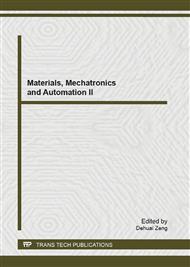p.164
p.170
p.178
p.183
p.188
p.193
p.198
p.203
p.211
Bitplane Based Volume Morphology for 3-D Image Speckle Noise Suppressing
Abstract:
In 3D image processing, such as medical volume data and industrial CT volume data analysis, speckle noise suppressing significantly affects their accuracy. This paper utilizes a group of volume morphology arithmetic operators, mainly including volume open and volume close, by extending area morphology into 3-D space. Using these operators, the light and dark objects of small size could be removed directly from the 3-D space of the target objects, while the connectivity of the main 3-D target objects in the volume data is still preserved. To improve the volume morphology operations efficiency, we decompose volume data in bitplanes instead of in gray scale space to reduce the binary volumes. To verify the effect of the improved volume morphology operators, they are applied to suppress speckle noises in 3-D images of coral and rat skull and compared with original volume morphology operations. Experimental results show that the algorithm proposed in this paper can significantly reduce computing time, while maintaining comparable results to original operations results.
Info:
Periodical:
Pages:
188-192
Citation:
Online since:
August 2013
Keywords:
Price:
Сopyright:
© 2013 Trans Tech Publications Ltd. All Rights Reserved
Share:
Citation:


